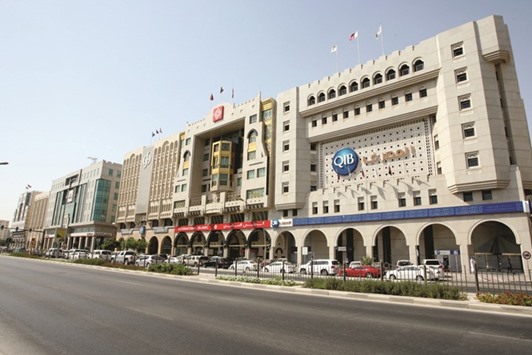Total assets of Qatar’s banks grew to QR1.27tn in February, 14.2% year-on-year (y-o-y) compared to 12.8% in January, a new report by QNB has shown.
Domestic assets grew 12.1% y-o-y in February, from 12.8% the previous month, driven largely by growth in domestic credit, QNB Economics said in its latest ‘Qatar Monthly Monitor’.
Bank deposits grew 19.8% y-o-y in February from 14.8% growth in January. The share of non-resident deposits to total deposits moderated to 25.8% from 27.1% the previous month, QNB said.
Private sector deposit growth jumped to 10.6% y-o-y from 2.8%, while the contraction in public sector deposits eased to -4.1% from -13.3%.
Non-resident deposits grew 101.4% as the banking sector continued to source foreign funds, the report said.
Loan growth accelerated to 13.3% y-o-y in February from 12.1% in January.
Loans to the public sector (41% of total domestic credit) drove the headline, with growth of 26.5% in February. Private sector loans grew by 7%, while foreign credit grew by 6.5%.
Overnight interbank rates, QNB said fell to 1.19% February from 1.4% in January; the three-month interbank rate stayed nearly flat at 1.65%, while the 1-year interbank rate picked up to 2.25% from 2.15%.
The Qatar Central Bank hiked its policy lending and deposit rates in March, in line with the rate hike by the US Federal Reserve; the lending rate rose to 5% from 4.75% while the deposit rate rose to 1.25% from 1%. The QCB also reduced the cash reserve ratio to 4.5% from 4.75%.
Qatar’s broad money supply (M2) expanded for the first time in 12 months, growing 2.5% from -0.8% in January.
“This was helped by a smaller than usual contraction in foreign currency deposits, which fell by only 0.6% in February versus 10.8% y-o-y the previous month,” QNB noted.
The country’s exports grew 22.5% y-o-y and 0.8% month-on-month (m-o-m) to $5.6bn, helped by the recovery in oil and gas prices. On the other hand, imports fell 15.4% y-o-y and 12.6% m-o-m.
Japan was the largest export market, with a share of 19.1% of total exports, followed by South Korea and India; China, the US and the UAE were the top three countries of origin for imports.
The report showed Qatar’s international reserves stood at $34.2bn compared to $34.1bn in January.
The current level of reserves is equivalent to 6.6 months of import cover, which is well above the International Monetary Fund recommended minimum of three months for a fixed-exchange rate regime, the monthly monitor said.
According to QNB, Qatar’s oil production fell to 610,000 bpd in March, from 620,000 bpd in February as the country continues to comply with Opec production cuts.
Brent crude oil prices fell by 5% month on month in March, reaching $52.8 for a barrel.
“The fall in Brent reflects ongoing concern over rising US oil production. We forecast Brent crude prices to be range bound in 2017 and fall between $55-$60,” QNB said.

Qatar banks’ domestic assets grew 12.1% y-o-y in February, from 12.8% the previous month, driven largely by growth in domestic credit, according to QNB. PICTURE: Nasar TK

